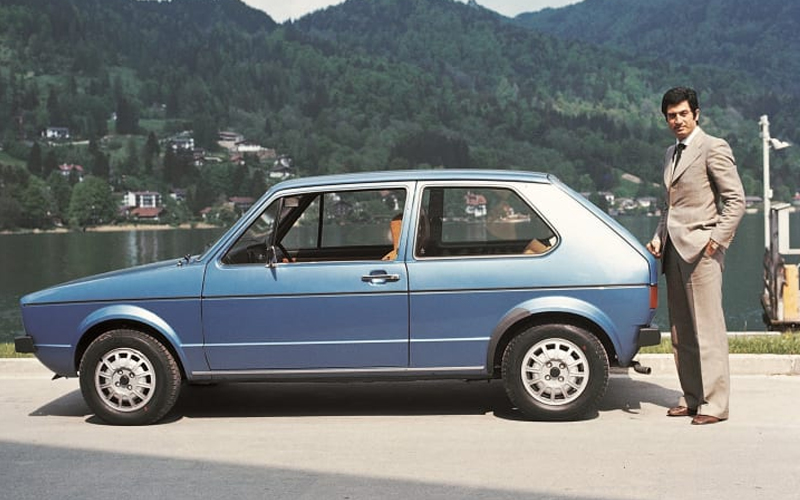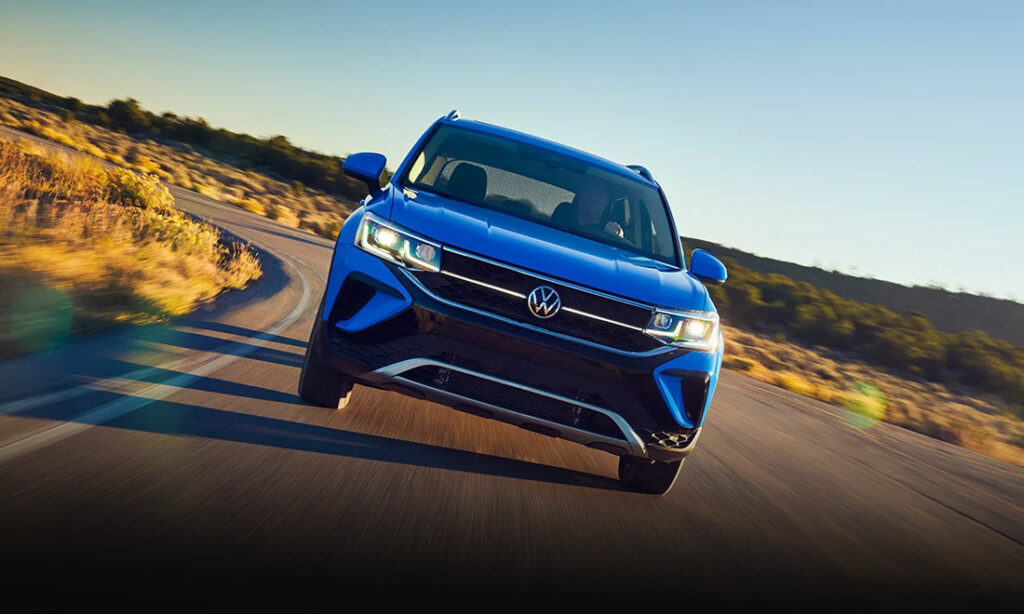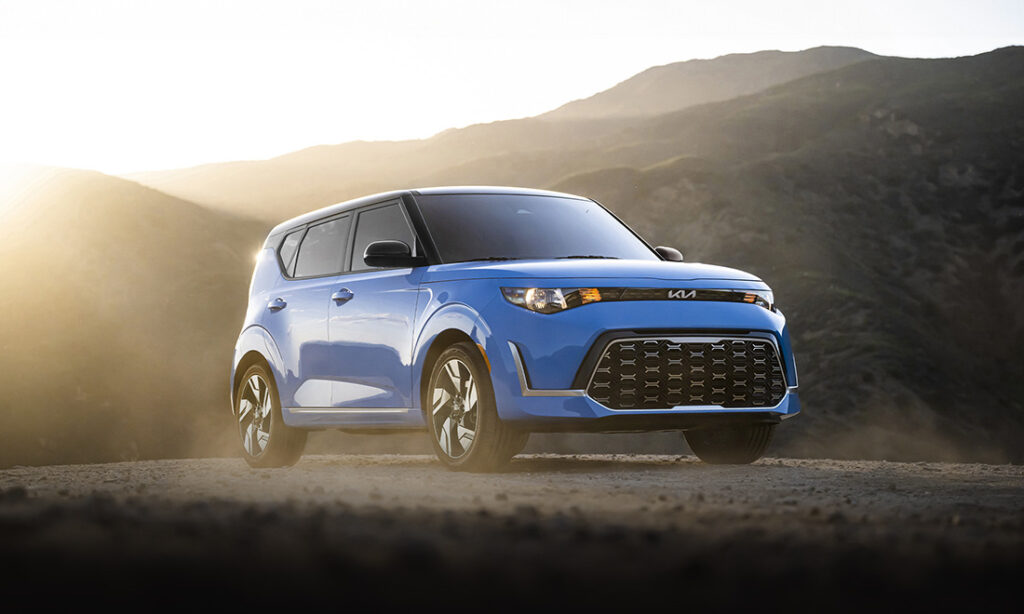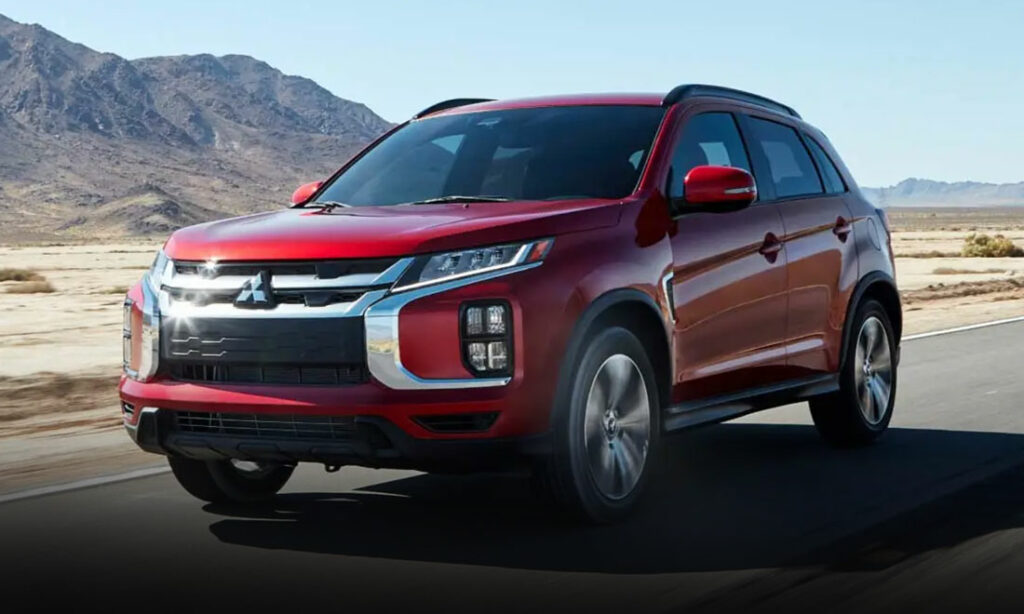Retro Review: Volkswagen Rabbit
Volkswagen needed a successor to the Beetle which led to the hot hatch Golf GTI of today, or as we in America knew it, the VW Rabbit.
From Bugs to Hares
While Mustangs, Javelins, Camaros, and Chargers were ruling the roads of the 60s, Volkswagen was gathering some nifty sales numbers of their own with the help of their Beetle. The compact little rear-engine car was a hit with those who wanted a simple affordable car that was easily maneuverable, unlike the Big Three’s land yacht sedans. The VW Beetle’s marketing focused on self-deprecating ads about its tiny stature and emphasizing the tagline “Think small.” It was a marketing tactic that made people actually want something that small and, in part, led to the model’s success.

One would think that the Beetle, with its 4-cylinder engine, was well-poised for the looming 1973 Oil Crisis and sales numbers would have kept climbing. However, Japanese automakers had made their presence known. Volkswagen now was competing with the likes of economy class front wheel drive cars like the Toyota Corolla and Honda Civic. Both of which boasted better fuel economy than the Beetle. American automakers eventually joined in with econoboxes of their own like the Ford Pinto and Chevy Chevette. The Beetle was also plagued with stagnant vehicle design, remaining virtually unchanged since its creation nearly 40 years earlier.

1976 VW Rabbit – vw.com | Shop Volkswagen Rabbit on Carsforsale.com
Volkswagen needed a change in their lineup. Something engineered to fit the same mold that made the Beetle so great, but better in every way. The new design Volkswagen came up with shaped the face of the company as we know it today. This model continues as the Volkswagen Golf, brought us the Jetta, launched the hot hatch segment, and introduced the performance GTI nameplate. Let’s take a look back at the fondly remembered Golf Mk1, or as we in America knew it, the VW Rabbit.
Germans: Better Engineers Than Designers

The creation of the VW Rabbit didn’t happen overnight. In fact, Volkswagen had been trying to find something to replace the Beetle since the 50s. The various conceptual designs were named EA, which stood for Entwicklungsauftrag (or development project for those not fluent in German). Hundreds of different designs and concepts were generated in house at Volkswagen, with input from Porsche, and some prototypes from Ghia who created the VW Karmann Ghia. Nothing quite landed as a direct successor to the Beetle. Models like the 411 and K70 tried to fill in as updated replacements, but neither reached substantial sales, and both ended abruptly.

Giorgetto Giugiaro next to the Golf Mk1 – Giorgetto Giugiaro | Shop Volkswagen Golf on Carsforsale.com
Volkswagen was slowly leaning towards a boxy hatchback design after so many EA iterations, but they just could not get it to be visually appealing. Enter Giorgetto Giugiaro, an Italian designer who was tasked by VW with making an eye-catching design based around a two-box body and available as a 3 or 4 door model. Giorgetto’s design method was reminiscent of origami. Much like the folded paper art, the car concept was a sharp cornered, angular design with virtually no curves. This car design concept manifested itself not only in the Rabbit, but the Passat, Sirocco, and Jetta.
VW Golf… or Rabbit

There it was. The Volkswagen Golf Mk1 debuted for Europe in 1974 and would reach North American audiences in 1975 as the Rabbit. The name change for America came down to the Golf name coming off as a bit posh, seeming to pander to the upper-class. The Rabbit moniker removed any perceived upscale attitude and instead related more to a younger demographic and correlated better to its appearance and performance. Something small and nimble – a rabbit.

The Volkswagen Rabbit was set on a steel unibody frame, had a nearly vertical rear hatch, featured seating for five, had a folding rear seat for extra cargo room, and was the best-looking boxy car of its time. Under the hood you could find a 4-cylinder engine that originally came in either a 1.1L or 1.5L size with each making 50hp or 68hp respectively. Later, a 1.6L diesel engine became available in 1976 that made 35mpg making it one of the most fuel-efficient compact cars amongst its competitors. The engine was matted to either a 3-speed automatic or 4-speed manual.

The Rabbit’s handling was made up of a simple rack and pinion steering, independent front suspension with MacPherson struts, semi-independent rear suspension featuring a torsion beam axle with trailing arms, rear coil-over dampers, and front disc brakes with drums at the rear. All these components coupled with the Rabbit’s short length to make for a maneuverable car with a turning diameter of just 32ft. No power steering was kind of a letdown for the handling department, but the narrow tire and light weight eased the issue.

The Rabbit was nothing super impressive, but it got you where you needed to be for an affordable price. Volkswagen proved this idea ahead of the American release by driving two of their Rabbit models over 19,000 miles from Fairbanks, Alaska to Tierra del Fuego, Argentina at the southernmost tip of South America. If that’s not a show of dependability and durability, I don’t know what is. But Volkswagen didn’t just stop at making a typical everyday driver, they also wanted to show that their car could be practical, fun, and have great performance.
A Fluffle of Rabbits
The GTI was probably the best thing Volkswagen ever did in its automotive history. Strong statement I know, but this was a huge turning point for the company. They had been a company known to the public for rehashing the exact same model year after year with little to no changes. The sudden emergence of an improved performance model just 2 years following the original model’s debut was almost unheard for Volkswagen.
1984 VW Rabbit GTI – vw.com | Shop Volkswagen Golf GTI on Carsforsale.com
The VW Rabbit GTI was a much-improved version of the base Rabbit that made its way to showroom floors in 1976. The GTI featured a tuned 1.6L 4-cylinder engine that made 108hp with a 4-speed manual transmission. The front disc brakes were enlarged and ventilated for better stopping performance. Front and rear anti-roll bars were added, and the suspension was calibrated to be stiffer with the ride height lowered about half an inch. Wider wheels were fitted, and the wheel wells were enhanced to match with added black plastic fender flares.

The design of the vehicle externally was relatively similar to the base model. The only major changes being the added fender flares, lower front spoiler, red accent around the grille, matte black frame around the taillight section, and the added GTI badging. The interior added the now infamous VW plaid upholstery option and a fun dimpled golf ball gear shifter. This sporty Rabbit GTI was a spritely ride that could make 0-60mph in 9 seconds, handle corners with ease, all while looking like a typical daily driver. Motorists of the time recall the Rabbit GTI as being quite the sleeper in its day.

1980 VW Rabbit Pickup – vw.com | Shop Volkswagen Pickup on Carsforsale.com
But Volkswagen didn’t stop at just making the Rabbit perform better. They also made some interesting choices in body styling. Take for instance the VW Rabbit Pickup, otherwise later known as the Caddy. It looked like your typical rabbit from the front but was actually a ute. The utility of a truck, but the with the fuel efficiency of the Volkswagen’s 1.6L diesel or 1.7L gasoline engines.

1980 VW Rabbit Cabriolet – vw.com | Shop Volkswagen Cabriolet on Carsforsale.com
Volkswagen would also bring about the Rabbit Convertible or Cabriolet. It was your typical base Rabbit, but the whole roof folded back. How many hatchbacks can you name that came as a convertible? Not many. It was a big gimmick aimed at teens as VW reached for more youthful sales.
The Disappearing Rabbit
The Rabbit name would eventually leave with the end of the Mk1 Golf. Following its end, the Volkswagen Golf moniker took its place across all regions for future iterations of the model. Our Retro Reviews usually trail off with the sad demise of a once great or noteworthy model, but the Rabbit still lives on technically. The Golf is now in its eighth generation and still going strong. The Rabbit name has even made appearances over the years as it was pulled from VW’s magic hat for the 2003 American Mk5 Golf and added as a special edition for the Mk7 Golf GTI. However, one important thing to point out from this whole creation and life of the Rabbit is that it was made to replace the VW Beetle all the way back in the 1970s, but those stubborn Germans just kept making the Beetle all the way to 2019.

1984 Rabbit GTI and 2019 Golf GTI Rabbit Edition – vw.com | Shop Volkswagen Golf GTI on Carsforsale.com

















My dad had a 1977 rabbit I believe. He had it forever. This article brought back good memories
This is great, thanks for sharing and taking a look at our article!